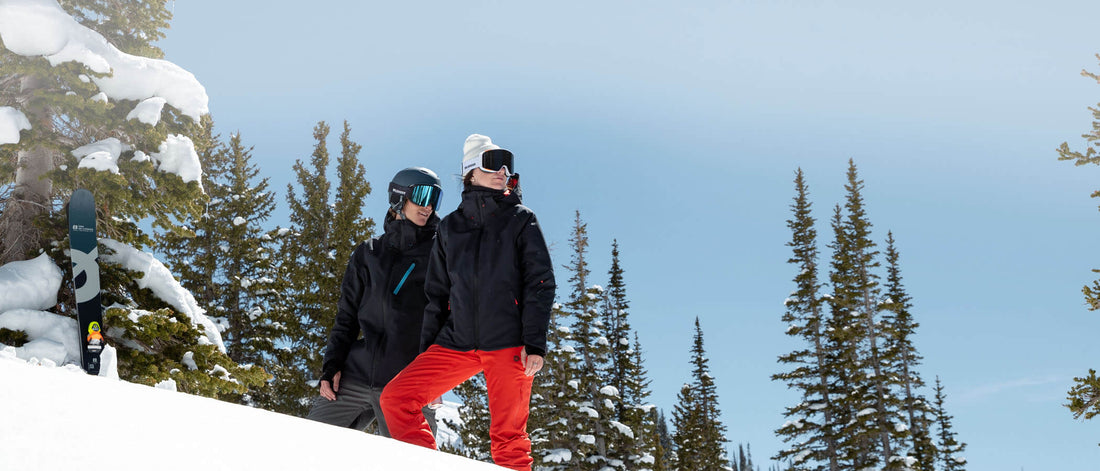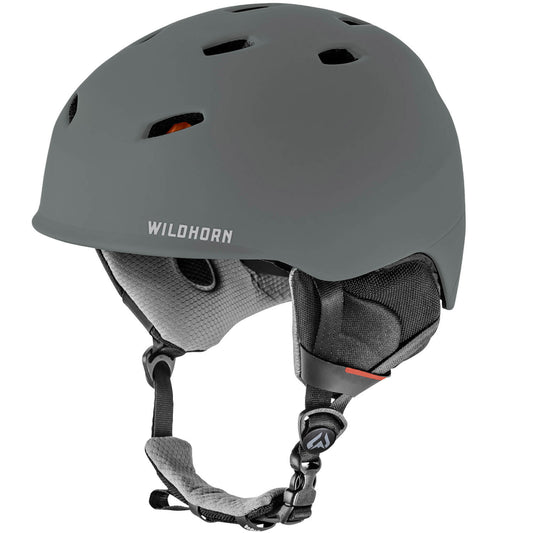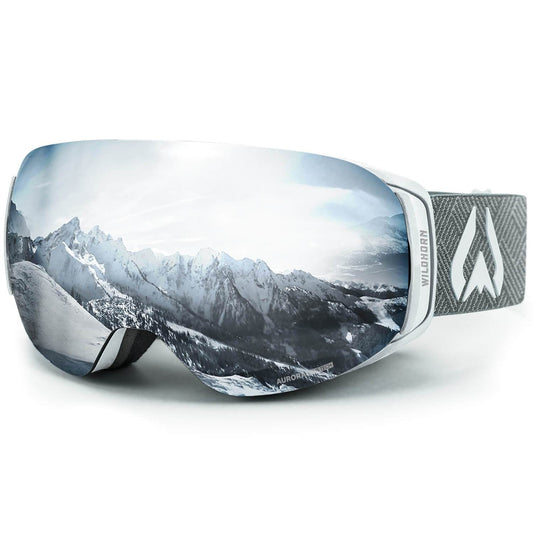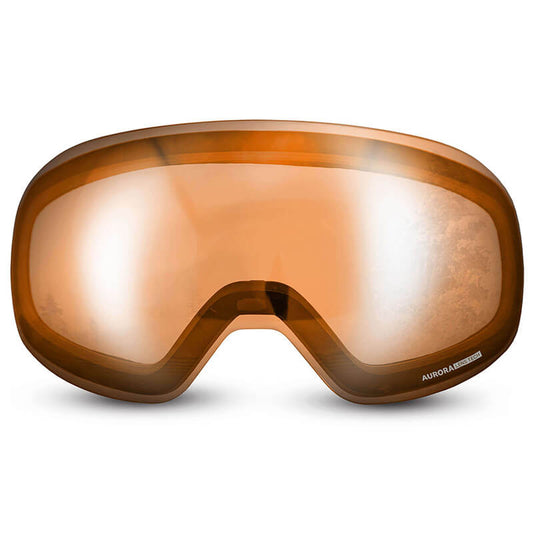How to Pull off a 100-Day Ski Season with a Full-Time Job
By: Guest ContributorBy the time I skied my 100th day this season—skinning up Alta at sunset after a rogue May storm dusted the mountain with a few inches of fresh snow—the outing felt both special and normal. Special because every ski day is a high-five from life. Normal because I’d spent the whole season getting re-accustomed to skiing multiple days per week like I did ski-bumming for many years.
These days, I am a homeowner. I have a career; I have garden tools; I fill out weekly timesheets at work. But I found myself putting off too much of my weekly fun until Friday happy hour. Yes, I still skied every weekend and holiday, with frequent dawn patrols thrown in for good measure. But skiing, to me, is what tennis balls are to Labradors. So, realizing that my indoor days had grown a bit more frequent than my outdoor days, I felt a wistful pang in my soul.
So, this season I decided to fully renew my vows with skiing and see what would happen if I balanced my full-time job with skiing 100 days, which is the elusive numeric benchmark at which a skier knows they’ve proverbially gone all-in.
It meant balancing work and mastering life logistics—and, oddly, I often had to defend the way I chose to spend my time to people who see “priority” and “play” as separate line items on the schedule. Here’s what I learned—and how some of my hard-earned lessons might help other people trying to do a better job of getting out more.
1. There’s quality in the quantity.
By doggedly committing to multiple dawn or dusk patrols per week, and skiing every single Saturday and Sunday between November and May, I rode through some amazing days and some laughably poor conditions. This gave me the opportunity to remember why skiing in any conditions is always more fun than not skiing.
By pushing through all the cruddy and icy snow days, I was in strong shape to shred all day long on good days. The “bad” days just felt like training for the great ones—and they weren’t exactly a chore. Not with Passion Pit on the playlist, toddy in the Thermos, and swooshing to be done.
I also found creative ways to take photos even when the snow was not prime for hero shots. I documented backlit clouds against the silhouette of the chairlift cables. I photographed the way raindrops looked on my snow goggle lens on the soggiest day of the season. I filmed a blustery storm rushing in and blanketing Solitude resort after it fell silent, closed for the season, with no one present but the mountain and myself.
When you find quality in the quantity, you revel in the imperfections of any mountain day. The point is rolling with whatever the day brings, and photographing your adventures is a fun way to celebrate their uniqueness, warts and all.
2. Savor the rewards of getting out no matter what the weather.
My friend Elizabeth and I hiked up Brighton in a wild spring lightning storm. We acknowledged that this didn't align with safety protocol, but we were pretty sure the lift poles would get zapped first. Halfway up the mountain, we were drenched and ready to surrender. But suddenly the rainstorm subsided, the clouds parted, and we finished our adventure beneath an otherworldly, fiery sunset. If not for this 100-day goal, we never would have thought to go ski touring that evening, and that magical sunset would have never imprinted our memories.
The bottom line: You’re outside. You’re so, so lucky.
3. Learn to embrace slap-happy exhaustion.
I made good use of the resorts that allow inbounds skinning before they opened for the season (thank you, Brighton and Alta ) then jumped into full throttle mode in December. Holiday time off work conveniently coincided with a prodigious storm cycle, so I skied 17 days in a row. I gobbled each day’s powder refills like a glutton; my energy sharply deteriorated on the 14th consecutive day, when every chopped-up snow patch threw me like a bucking bronco. (That day I ended up leaving the hill early and then slept for 10 hours, which recharged me enough to respectably click into my bindings the next day.)
As the season continued, I incorporated dozens of backcountry dawn patrols, dusk patrols, shared moments of inbounds play with friends, and mind-clearing solo outings into my quest. Soon I broke past the exhaustion barrier, and my energy picked up steam. I got used to skinning back-to-back days lugging a heavy pack. I made a game out of timing my mogul turns to the tempo of Scissor Sisters’ “Running Out,” repeating the exercise for hours on end, laughing at the fact that I was training so hard just for the sake of it, not for any particular event.
And wouldn’t you know it: I got stronger as a skier and could push through big days without flagging. I was already a competent skier, but now I laid into my turns faster, more aggressively and confidently than I ever have before.
4. Become a master juggler.

I generally mapped out my ski schedule a week or two in advance, studying multiple weather forecast websites and placing my bets accordingly. I found a few committed dawn-patrol comrades, and we decided together which days were most likely to be good. We all had to be at work by 9 am, so we were on the same strict timeline. Trailhead by 5:30, summit by 7:30, back to the car by 8, and rush off to work after a three-minute shower. These days always left us a little short on sleep, but we felt like we had a special secret coming into office meetings after sunrise powder turns.
I set Saturdays, Sundays, and holidays aside to ski, heading to quieter backcountry enclaves on busy resort days. The day-job folks in the ski crew coordinated days of paid time off to line up with the snow forecast. Often, the bet paid off handsomely. Other times, storms came late or underperformed, leaving us using precious time off to ski dust on crust—then watch as others posted glorious powder shots on social media the next day when the storm finally set in. But in the end, all that careful planning was crucial in hitting my 100-day mark.
5. Cross-training is key.

Doing any one sport repetitively in your teens and 20s is no big jazz. But in your 30s and beyond, it calls for committed cross-training and stretching. Skiing four days a week was cause for my lower back to threaten mutiny unless I added two or three weekly yoga classes to my schedule too. This meant I was investing even more time to be able to ski, but it was well worth the effort.
All this high-elevation activity also meant I had roughly the daily caloric requirements of an adolescent rhinoceros. I ate and ate and ate, carrying Thermoses of stew or macaroni and cheese in my backpack. I bought Kind bars in bulk and never turned down a glass of nature’s recovery drink, beer.
My gear took a slightly heavier beating than usual; I broke three boot buckles and logged three visits to the shop to repair the core shots suffered by my ski bases. I ran my aging touring bindings into the ground.
6. Find support in unexpected corners.

I did have to defend or at least explain my 100-day ski season to some, but I was overwhelmed by positive support from many others in my life, some of whom don’t ski but were simply happy to watch me insist on having fun and see my goal to completion. Coworkers cheered me on with supportive comments on my Facebook page. My roommate pre-programmed our coffee maker the night before so it would help me wake up for dawn patrols. One friend told me she’s terribly intimidated by skiing but got a pleasant thrill from my accounts of high-up couloirs and chutes.
And I realized along the way: Happiness isn’t an insulated emotion. It isn’t contained. When you’re happy, people around you are a little happier too.
7. Never underestimate the power of play.

Ultimately, I sure slept less and multitasked more. But I insisted on spending a baseline amount of time outdoors doing something I care deeply about. Playtime is encouraged for kids, but as adults, we often cave to the notion that we just don’t get to do that anymore. We live lives with infrequent reprieve from tension, to-do’s, and screen time.
But a miracle drug is out there—literally, out there. Outside. It’s where we blow snow off pine boughs just for the fun of feeling like a smoke-blowing dragon. Where we howl like coyotes at the bottom of powder runs. Where we crank the pre-game music in the parking lot. Where we get numb, dirty, tired, silly, runny-nosed, sore, and … fulfilled.
Having hit my numeric goal, I’ve discovered the real goal that underlies it, which is prioritizing play amidst a full adult life. I’ll keep going out until summer shrivels the Wasatch’s last lingering snow patches. And I’ll await impatiently for next October’s snowflakes to fly. I may or may not carefully count my ski days next season, but prioritized play is definitely my new normal.
Written by Beth Lopez for RootsRated.







